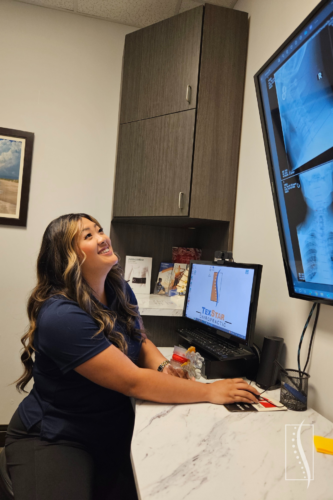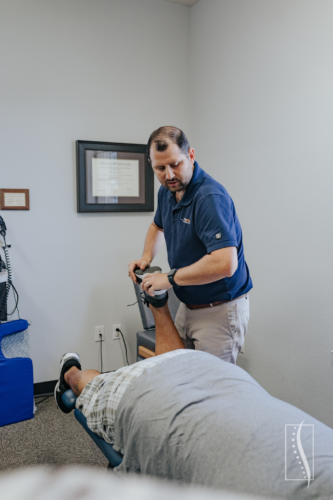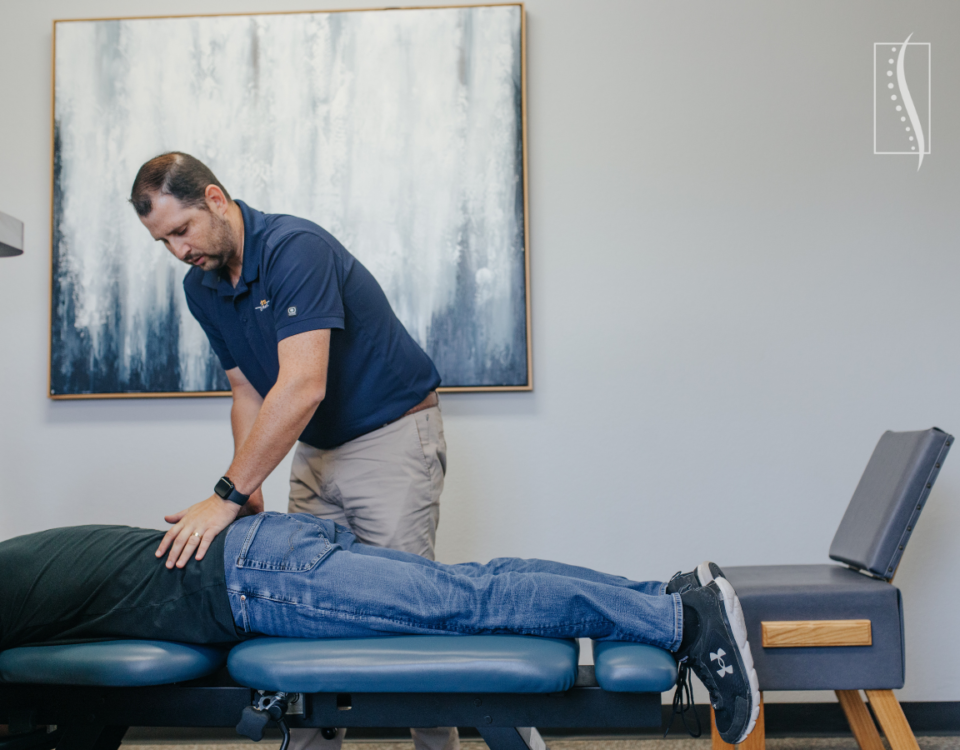
Combat Stress-Induced Back Pain: Uncover the Connection with TexStar Chiropractic
October 6, 2024
Sleep Optimization Tips
October 21, 2024With the growing prevalence of remote work, millions of individuals are spending increased hours at their desks, often in less-than-ideal home office setups. This shift has spotlighted the vital need for good posture and ergonomic practices to safeguard one’s health. Not only do these practices mitigate physical discomfort, but they also contribute significantly to mental well-being. By integrating chiropractic care with these daily habits, individuals can alleviate stress, improve mood, and enhance their quality of life.
The global pandemic has accelerated the work-from-home trend, which, while providing many benefits, also presents challenges to physical health. Makeshift workstations, dining chairs replacing ergonomic office chairs, and hours in front of screens without appropriate setups can wreak havoc on our bodies. The impact is not limited to physical discomfort; studies indicate that poor posture can adversely affect mental health, leading to increased levels of stress and fatigue.
The human body is designed for movement, yet modern lifestyles encourage prolonged periods of inactivity and poor posture, both in work settings and leisure. By prioritizing posture and ergonomics, individuals can prevent the development of chronic pain and stress-related conditions, fostering both physical and mental resilience.
The Importance of Posture and Ergonomics
Spine Health: Good posture is crucial for maintaining the spine’s natural alignment. When properly aligned, the spine maintains optimal functionality and load distribution, reducing the risk of developing conditions like herniated discs and chronic back pain. Poor posture can lead to imbalances that put undue stress on muscles and joints, causing discomfort and increasing the risk of long-term damage.
Mental Well-being: Interestingly, the physical effects of poor posture extend to mental health. The mind and body are intricately linked, with muscle tension and stress from poor posture affecting mood and cognitive function. Correcting posture can lead to a cascade of positive effects: stress reduction, improved concentration, and a more positive outlook on life.
How Chiropractic Care Can Help
Chiropractic care focuses on the spine and the body’s musculoskeletal structure. By applying specific adjustments and providing guidance on ergonomic practices, chiropractors can address misalignments that contribute to poor posture. These adjustments not only alleviate present symptoms but also prevent future complications that may emerge from prolonged bad posture habits.
Regular visits to a chiropractor can enhance one’s understanding of optimal posture and ergonomics, empowering individuals to make informed choices about their health. Chiropractors can also provide tailored exercises and stretches that support spinal health, promoting long-term wellness.
Practical Posture and Ergonomics Tips
- Ergonomic Workspace Setup:
- Chair: Invest in a chair that supports the lumbar curve of your spine. An ergonomic chair should allow your feet to rest flat on the floor with your knees at or below hip level.
- Desk: The ideal desk height allows you to type with your forearms parallel to the ground. Adjust your desk or chair so your elbows are at a 90-degree angle to reduce arm and shoulder strain.
- Monitor: Position your monitor so that your eyes are level with the top of the screen, reducing the need to bend your neck and keep it in line with your spine. The monitor should be about an arm’s length away from your face.
- Posture Breaks:
- Stand and stretch every 30 to 60 minutes to promote circulation and reduce stiffness. Simple stretches such as a standing cat-cow stretch or seated spinal twist can be effective.
- Use ergonomic reminders, like computer software or smartphone alarms, to prompt you to evaluate and correct your posture regularly.
- Exercise and Flexibility:
- Include physical activities in your routine that strengthen the core and enhance flexibility, such as yoga, pilates, or tai chi. These exercises help maintain the spine’s natural curvature and promote stability.

- Focus on exercises that open the chest and shoulders, counteracting the forward-hunching tendency encouraged by desk work.
- Include physical activities in your routine that strengthen the core and enhance flexibility, such as yoga, pilates, or tai chi. These exercises help maintain the spine’s natural curvature and promote stability.
Chiropractic Interventions
Regular chiropractic care plays an essential role in managing and optimizing posture. Chiropractors can diagnose and correct any musculoskeletal misalignments, offering advice tailored to the patient’s lifestyle and occupational needs. Chiropractic interventions not only target pain relief but also promote the overall integration of health practices by advising on proper ergonomic adjustments and posture maintenance.
Adopting good posture and ergonomics in your daily routine is not just about avoiding discomfort—it’s about enhancing your holistic well-being. Ensuring that your spine and body are aligned reduces the risk of chronic pain and impacts your mood and stress levels positively. Chiropractic care provides a proactive approach to maintaining these alignments, integrating them into a broader health str
ategy that benefits both mind and body. Adopting ergonomic habits now can prevent future complications, ensuring a healthier, more fulfilled lifestyle.
At TexStar Chiropractic, we are committed to assisting you in optimizing both your physical and mental health. Our experienced chiropractors are eager to help you understand the best practices in posture and ergonomics tailored to your needs. Contact us today to schedule a consultation, and explore how chiropractic care can be an integral part of your well-being journey.




